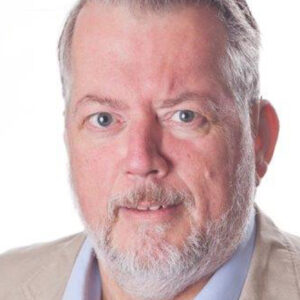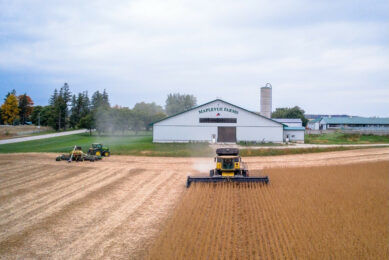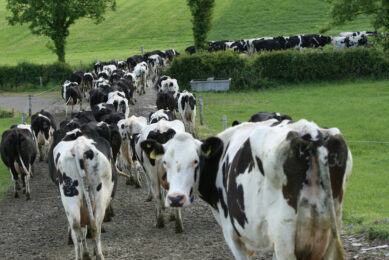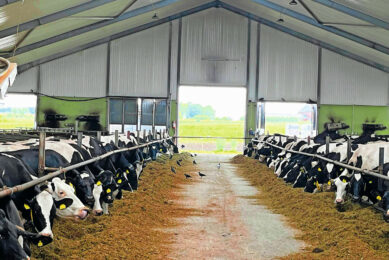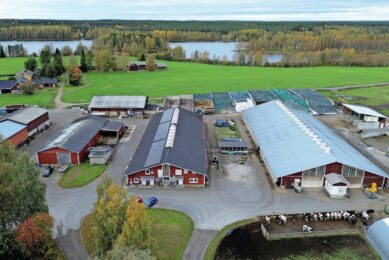Shrink or expand – it’s all about the return on Irish dairy farm
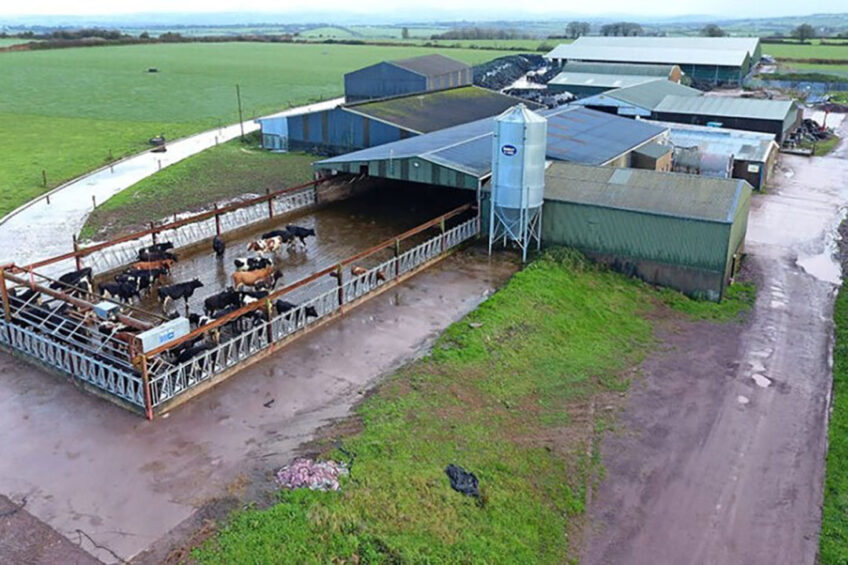
The Clonnoe Farm in Ballynoe, Ireland, is run by Shane Fitzgerald (44), a second-generation farmer. Fitzgerald’s company shows characteristics of both steady and substantial growth.
When entering the yard, you first see the large open-air waiting area with a 20-year-old 2×20 swingover parlour behind it. Immediately adjacent is a 40-year-old cubicle barn with 120 places and a shed with room for dry cows and some youngstock. Immediately after that, construction workers are in a shed busy renovating 30 cubicles. Then a cubicle barn is visible, with 256 cubicles, built just after the abolition of the milk quota. Next comes one with 126 cubicles that is less than 3 years old. “The stable construction is almost synchronous with our land area,” says the Irishman.
The farm set-up is fully linked to grazing. Around the buildings there are 145 ha of grazing land and 90 ha that are partly used for youngstock and partly used for fodder production, not that a lot of roughage is needed in the winter. The cows are usually housed around 10 November. In 2022, the cows were housed for a few days at the beginning of November due to the abundant rainfall. Then they went out again by day until early December. The cows return to pasture 5 days after calving, weather permitting.
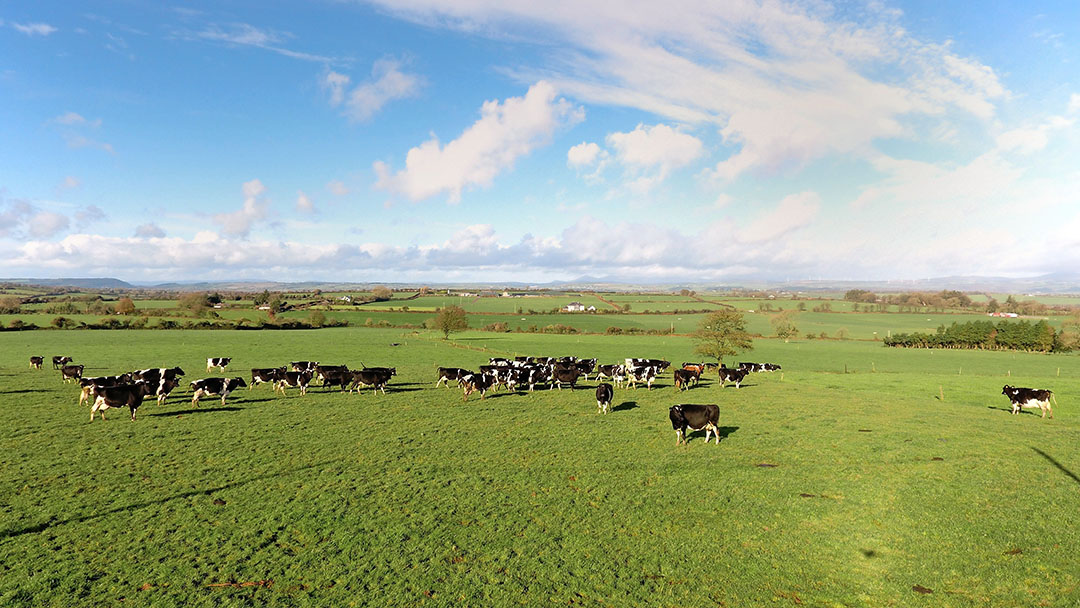
Fitzgerald, like many other Irish dairy farmers, works with a spring calving herd. The first calves see the light of day at the end of January. The 2nd and 3rd weeks of February see the calving peak, with about 90 calves per week. The last calves are born at the end of March. The insemination season for the dairy cattle runs for 8 weeks from 27 April, after which bulls enter the herd until 27 June to cover the last cows that are not in calf. The synchronised youngstock is inseminated all on one day followed by bulls for another 6 weeks.
Growth project
Fitzgerald came home to farm in 1998. At that time there were 120 cows. Until 2010, it grew steadily to 180 cows through purchases of milk quota and adjustments to the existing buildings. “In 2010 we started a ‘Growth’ project because it then became clear that we could structurally rent adjacent land from my uncle,” says the farmer. “We also realised that other land would eventually be offered. The questions were: where do you want to be in 2020? What are the limitations? How should you set up the existing company for this? What should you change? How can you best organise this financially?”
The estimation that more land would become available became a reality. Since the implementation of the growth course, Fitzgerald has managed to add around 25 ha to his acreage every year.
Some of this land is more than 2 km from the milking location. “It is all accessible to the cows, but it can take an hour and 3 quarters at certain times of the year to herd them there. That is why we mainly use that furthest part for forage harvesting and at the end of the season we put a group of cows that are milked once a day on this block.”
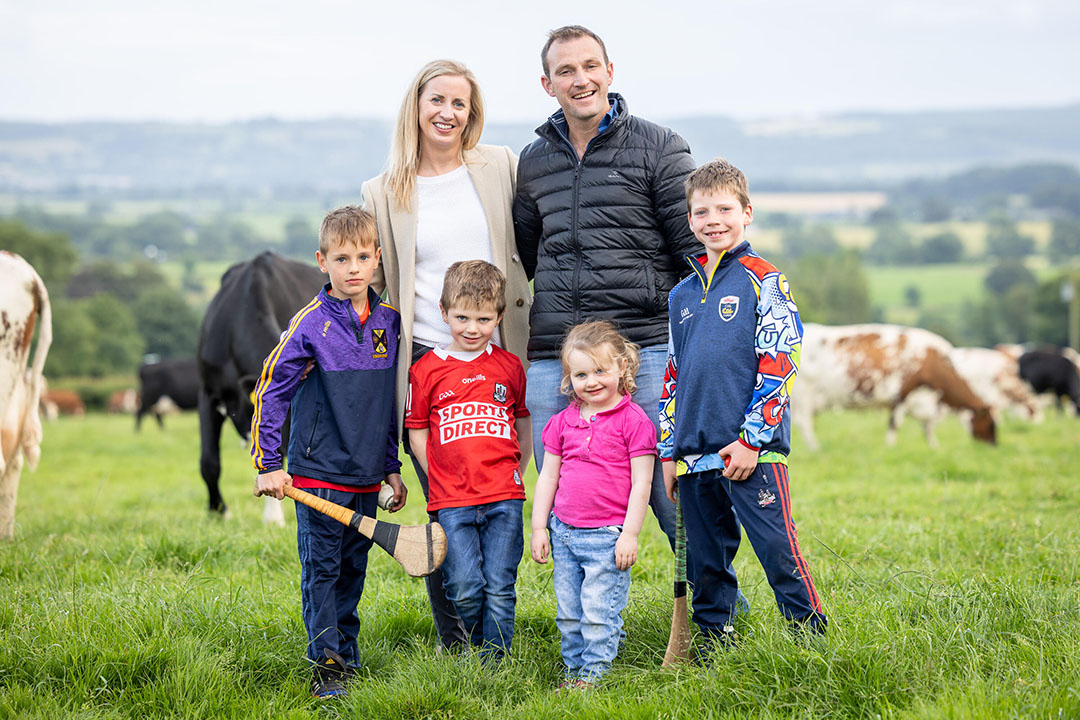
Fitzgerald works with light cows because of the long distances covered: a 3-way rotational crossing of Holstein, Norwegian Red and Jersey. “Light (540 kg) and healthy cows with strong legs, good fertility and strong on cell count,” he noted.
After the abolition of the milk quota, substantial investments were made in a new stable capacity and the renovation of 140 existing boxes. In total there are now 522 cubicles for the 450 cows. So, there is still some room for growth.
“The focus is no longer on that,” says the Irishman. “We want to consolidate and optimise first, especially in the rearing of youngstock and the replacement of cows. This was too low due to the rapid growth of our own herd. We also first have to acquire more land for growth in animals; we are almost at maximum occupancy due to the derogation requirements.”
Farm investments
The investment in the stables, including a lagoon for 3 months of manure storage, was just under € 400,000, less than € 1,100 per place. The herd has been expanded from own breeding, but there is also € 150,000 which has been committed from cash flow. Yet the funding is not high (certainly not by Dutch standards). Here is now a relatively young farm for about 500 cows with € 1.2 million in financing. “Enough to get you out of bed, but not so much to keep you awake,” is Fitzgerald’s motto.
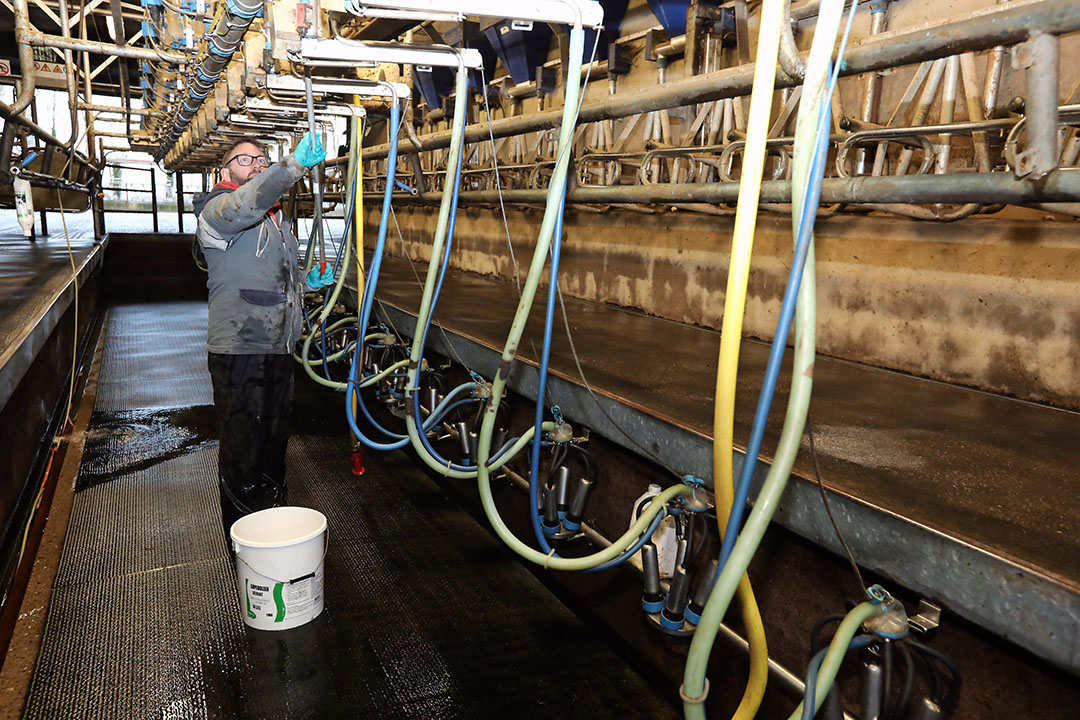
He deliberately does not invest in mechanisation. There is a 25-year-old tractor for handy jobs and a 3-year-old loading shovel that prepares the silage blocks for a few days during the stable period. There is an old mixer wagon in the yard but it is no longer used. The forage harvesting, fertilisation, grassland care and renewal is done by the contractor. “Cows appreciate; tractors and machines depreciate,” he pointed out.
Manure problem
More than half of Fitzgerald’s acreage is under short-term contracts. That is a risk for the future. When the ground disappears, the problem is not in the roughage supply. Grass is for sale; the contractor can simply silage more. However, the derogation rules are becoming increasingly strict in Ireland. The critical limit is a milk production of about 6,400 kg of milk. If you go above that, the cow suddenly accounts for roughly 13% more nitrogen according to the standards, so you need 13% more land.
Fitzgerald is now almost at that limit in terms of occupation. “We will certainly keep our eyes open for more land, whether through rent or purchase, but only if it’s right for our farm. If reducing 10% is more profitable than increasing land bank, then that’s what we will do. It’s all about the return on investment.”
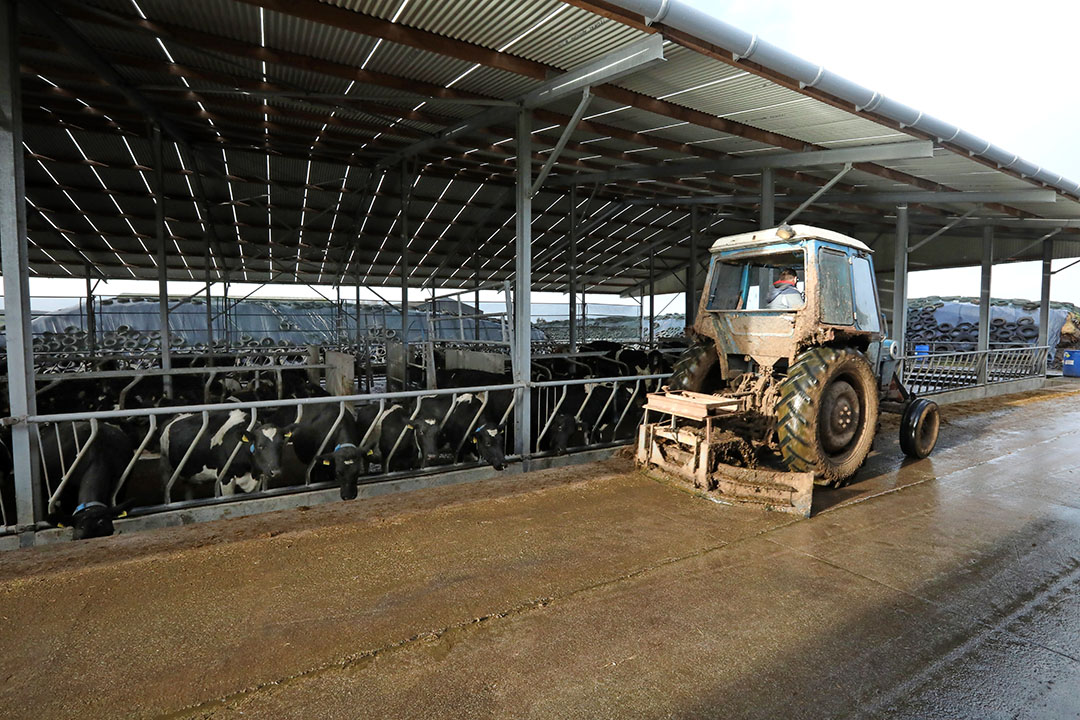
Partly due to the low supply of concentrated feed – less than 1,000 kgs per cow per year – milk production is highly dependent on grass quality. “Our land is permeable and water-storing. Of course, there are some wetter plots. But this year, drought was a problem, affecting grass growth and quality in August. The total grass growth is up to standard due to the considerably longer growing season. At the beginning of November 2022, we really had to keep grazing to let the grass go short enough into winter.”
Another pressure on production is the replacement percentage, which has been too low due to enabling the continuous rapid growth from own stock. “We will therefore select harder in the coming years,” said Fitzgerald, who aims for 15-20% replacement; in recent years it has stuck at 12%. “Actually, only cows left with poor fertility fell outside the spring calving,” he said.
Grass growth
Grass is something he knows a lot about. From February to mid-September, he goes on a farm walk at least once a week to measure grass growth and enter it into an app that registers the growth pattern and predicts it using external data. That measurement is done “by eye”: “With 20 years of experience, this works very well even without measuring rods. My manager, Jonathon, does it for the large part of the grazing block around the farm; I mainly do the remote areas and the areas that are more difficult to estimate.”
Grass growth is supported with their own manure, spread by the contractor who also spreads the 200-220 kg N from fertiliser per hectare from February to September. This happens weekly after grazing with GPS support on the tractor. “Where necessary, a maximum of 20 kg per hectare is spread after 1 September. That has worked very well this year.”
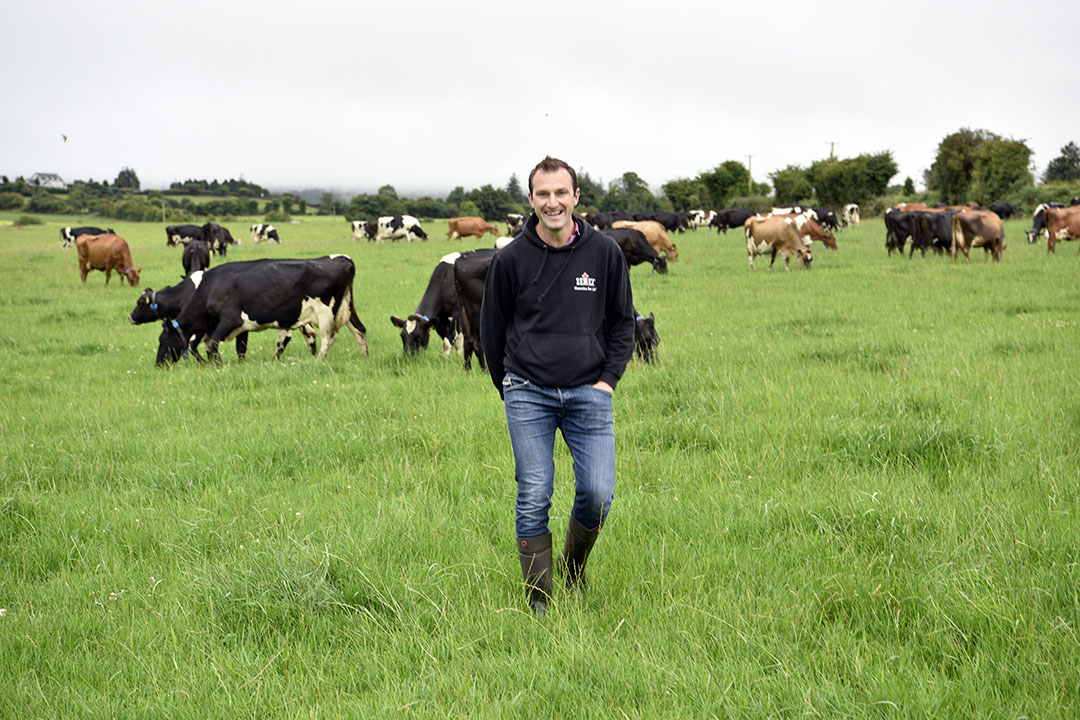
The first thing that becomes restrictive on the farm is staffing. Currently, there is a Dutch manager and 2 permanent employees. “In the 20 years that I have been a farmer, I have started to look at employees differently,” says the Irishman. “It has increasingly moved from ‘working for’ to ‘working with’. It has gone from directive management to consultation. Each has its own specialty and tasks. I am considering involving them more in and binding them to the company through a kind of partnership.”
Good margins
The company realises high margins. In 2021, the cost price was 28.4 euro cents per kg of milk, of which 10.5 euro cents were direct costs, 10.6 euro cents for labour and mechanisation, 2.1 euro cents building costs, 4.5 euro cents land costs and 0.6 euro cents miscellaneous. Total receipts, including subsidies and premiums, amounted to 44.0 euro cents.
In 2022, the milk price was 50% higher, while the cost price increased 25%. “Yes, it’s really good. But what happens if the milk price collapses? Someday there will be a milking parlour that needs to be built or even more land to purchase; it is important to be in a position to do that financially if and when it happens,” said Fitzgerald.


